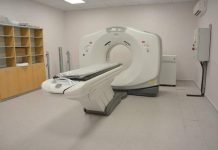Parkinson’s Drugs: Parkinson’s medications list including newer drugs
PARKINSON’S DISEASE DRUGS
🔴 LEVODOPA
👉 often taken in combination with other drugs, such as carbidopa and entacapone.
🟤 DOPA-DECARBOXYLASE INHIBITORS
👉 carbidopa
👉 benserazide
Drugs that prevent peripheral conversion of levodopa to dopamine.
🟢 DOPAMINE AGONISTS
👉 pramipexole
👉 bromocriptine
👉 ropinirole
🟡 MAO-B INHIBITORS
👉 rasagiline
👉 selegiline
👉 safinamide
⚫️ COMT INHIBITORS
👉 entacapone
👉 opicapone
🔵 ANTICHOLINERGICS
👉 orphenadrine
👉 procyclidine
👉 trihexyphenidyl
👉 benztropine
🟣 OTHERS
👉 istradefylline
👉 amantadine
👉 pimavanserin (psychosis associated with PD)
Newer anti-parkinsonism drugs;
1. Artemisinin shows promise in treating Parkinson’s disease
A new study suggests that artemisinin, a compound derived from the wormwood plant, may be a promising new treatment for #Parkinson’s #disease. Artemisinin is best known for its antimalarial properties, but it also has anti-inflammatory and neuroprotective effects.
In the study, researchers found that artemisinin treatment improved motor symptoms and protected dopamine #neurons in a #mouse model of Parkinson’s disease. Artemisinin also inhibited a signaling pathway thought to play a role in the #inflammation and neurodegeneration that occurs in Parkinson’s disease.
These results are very exciting because they suggest that artemisinin may be a potential new treatment for Parkinson’s disease. However, #clinicaltrials are needed to test the effects of artemisinin in people with Parkinson’s disease.
2. ✅Syndopa✅
a combination of levodopa and carbidopa, is primarily used in the management of Parkinson’s disease. Levodopa is converted to dopamine in the brain, compensating for the deficiency associated with Parkinson’s.
Uses:
– Parkinson’s Disease
Mechanism:
– Levodopa Conversion: Levodopa is a precursor of dopamine, a neurotransmitter crucial for motor control. Once in the brain, levodopa is converted to dopamine, alleviating Parkinson’s symptoms.
– Carbidopa Inhibition: Carbidopa is often combined with levodopa to prevent its conversion to dopamine outside the brain, ensuring more levodopa reaches the brain and minimizing side effects.
Dosage:
Adults— At first, 25 milligrams (mg) carbidopa and 100 mg levodopa (1 tablet) 3 times a day. May Increase Later
Side Effects:
– Nausea and Vomiting: Common side effects, especially at the initiation of treatment.
– Dyskinesias: Involuntary movements may occur, especially with long-term use.
– Orthostatic Hypotension: A sudden drop in blood pressure upon standing.
– Psychiatric Effects: Behavioral changes, hallucinations, or confusion may occur.
-Drowsiness
Carbidopa and levodopa have been found to cause vitamin B6 deficiency. Patients on carbidopa/levodopa should be on prophylactic vitamin B6.
Reference: Lv J, et al. CNS Neurosci Ther. 2023;29(4):1012-1023. doi:10.1111/cns.14063























